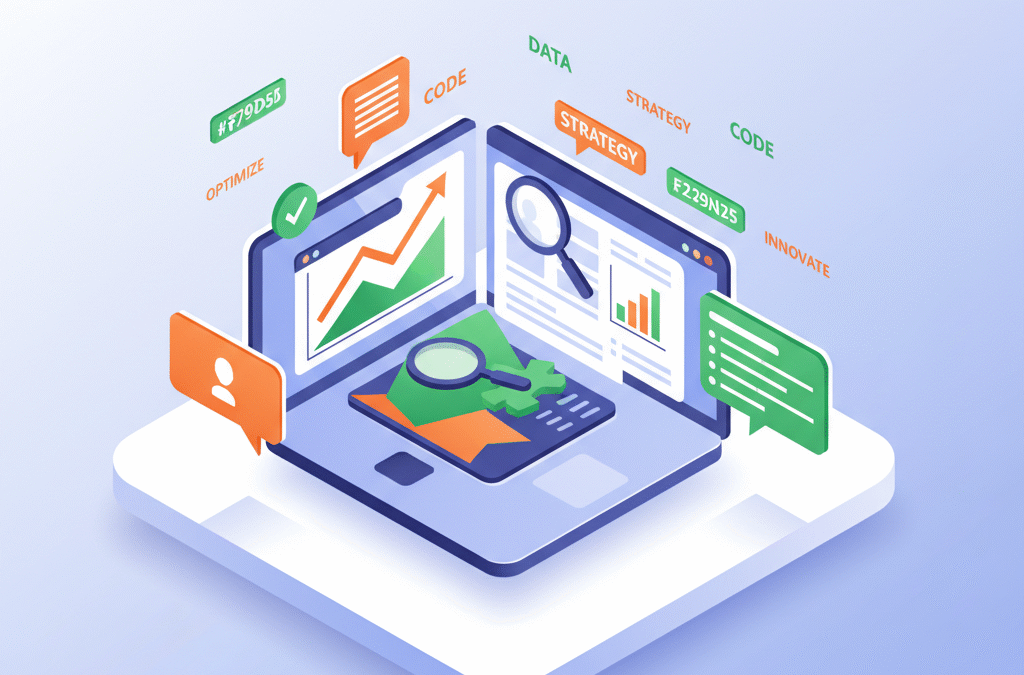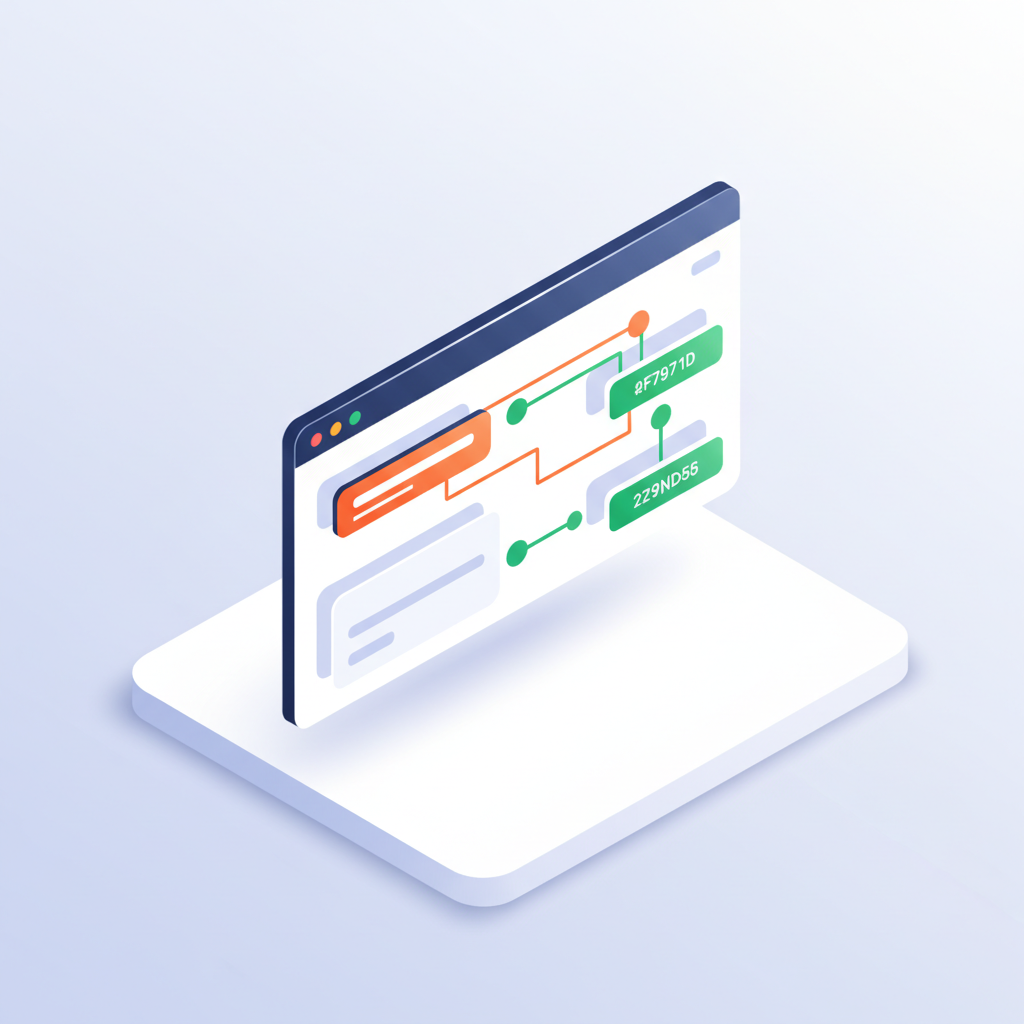SEO Optimization Services for Ecommerce: 2025 Guide
by ESSO Co | Sep 29, 2025 | Blog |

seo optimization services for ecommerce websites
Key Takeaways
- AI-driven tools like ChatGPT are significantly influencing how users search for ecommerce products.
- Traditional SEO strategies are becoming less effective in the rapidly evolving search landscape.
- Ecommerce brands need to adapt their SEO approaches to align with changing customer discovery and research behaviors.
- Understanding AI’s role in search can help ecommerce businesses optimize their online presence more effectively.
The Definitive Guide to SEO Optimization Services for Ecommerce Websites
AI Overviews now appear in 13% of Google searches, while ChatGPT processes 2.5 billion prompts daily, rapidly approaching Google’s 14 billion searches. For ecommerce brands, this isn’t just a shift in search behavior; it’s a fundamental rewiring of how customers discover and research products. Traditional SEO strategies that worked six months ago are leaving money on the table.
AI-driven SEO services now prioritize semantic search, voice optimization, and personalized user experiences to boost ecommerce visibility and conversions in 2025.
I’m Vijay Jacob, founder of ESSO Co, where we manage over $250M in annual revenue for 7 and 8-figure ecommerce brands. What I’m seeing isn’t the death of SEO, it’s its evolution into Agentic SEO, where human strategy meets AI execution at scale. The brands winning in 2025 aren’t just optimizing for Google’s blue links; they’re engineering visibility across AI answer engines, voice assistants, and the emerging search landscape that’s reshaping how customers find products.
For a deeper dive into the latest trends and actionable strategies, you can explore our blog for ongoing insights on ecommerce SEO optimization.
Why Ecommerce SEO Optimization Is Non-Negotiable in 2025
The stakes have fundamentally changed. When customers ask ChatGPT “What’s the best skincare routine for sensitive skin?” or Google serves an AI Overview for “wireless headphones under $200,” your brand either exists in that answer or it doesn’t exist at all in the buyer’s mind. There’s no middle ground.
Our managed brands have seen this shift firsthand. Organic traffic remains the highest-converting channel for ecommerce, averaging 2.4x higher conversion rates than paid social and 40% lower acquisition costs than Google Ads. But the traffic sources are diversifying rapidly. Beyond traditional Google results, we’re tracking meaningful revenue from AI-powered search results, voice queries, and answer engines like Perplexity.
Critical Business Risks of Neglecting Ecommerce SEO in 2025:
- AI Invisibility: Your products won’t surface in ChatGPT recommendations or Google AI Overviews
- Rising Acquisition Costs: Paid channels become your only growth lever as organic visibility shrinks
- Competitor Advantage: Brands investing in Agentic SEO capture disproportionate market share
The diagnostic is simple: check if your brand appears when you ask AI assistants about your product category. If not, you’re hemorrhaging potential customers to competitors who’ve adapted their SEO optimization services for ecommerce websites to this new reality.
What’s changed isn’t just the technology, it’s the customer journey. Buyers research differently, compare products through AI-generated summaries, and make decisions based on information they never directly sourced from your website. Your SEO strategy must account for this invisible influence layer.
Decoding Ecommerce SEO: What Really Drives Rankings and Revenue

Ecommerce SEO operates on different mechanics than content sites. Your category pages must capture broad commercial intent while product pages convert specific buyer queries. The architecture isn’t just about crawlability, it’s about guiding customers through a purchase decision at every touchpoint.
The core elements that move the needle: keyword intent mapping across your product catalog, strategic internal linking between categories and products, schema markup that feeds rich snippets and AI answers, and user experience signals that Google now weighs heavily in rankings. Page speed isn’t just a ranking factor, it’s directly correlated with conversion rates and customer lifetime value.
| SEO Element |
Technical Impact |
Revenue Impact |
AI Visibility Impact |
| Product Schema Markup |
High |
Medium |
Very High |
| Site Speed Optimization |
High |
High |
Medium |
| Internal Link Architecture |
High |
High |
Medium |
| Review Schema & UGC |
Medium |
Very High |
Very High |
| Category Page Optimization |
Medium |
Very High |
High |
The compounding effect is where ecommerce SEO becomes transformative. A 15% increase in organic traffic doesn’t just mean 15% more visitors, it often translates to 25-40% more revenue because organic traffic converts at higher rates and has higher average order values. One of our Shopify brands saw organic traffic increase 180% after technical SEO improvements, but revenue from organic increased 290% due to better user experience and conversion optimization.
Google’s integration of store ratings as a 2025 ranking factor exemplifies how user experience signals now directly impact visibility. Your SEO optimization services for ecommerce websites must address both the technical foundation and the trust signals that influence both algorithms and customer decisions.
Keyword Research and Semantic Mapping for Ecommerce: Frameworks That Work
Ecommerce keyword research isn’t about finding high-volume terms, it’s about mapping commercial intent across your entire product ecosystem. The brands winning organic traffic understand that customers use different language at different stages of the buying journey, and your content architecture must capture those nuances to meet buyers where they are. For example, a customer searching “best running shoes for flat feet” is at a different stage than someone searching “Nike Air Zoom Structure 24 size 10.” Your keyword strategy should reflect this spectrum of intent, mapping keywords to specific product pages, category hubs, and educational content.
For more foundational information on search engine optimization, see this overview of search engine optimization.
Site Architecture and Internal Linking: Engineering Crawlability and Conversions
Your site’s architecture determines whether search engines can efficiently crawl your products and whether customers can find what they’re buying. The difference between a well-structured ecommerce site and a poorly organized one isn’t subtle, it’s the difference between predictable organic growth and traffic that stalls at every algorithm update.
I’ve audited hundreds of Shopify and WooCommerce stores, and the pattern is consistent: brands that follow the “3-5 click rule” see both higher search rankings and better conversion rates. This rule means any product should be reachable from your homepage within 3-5 clicks maximum. When customers or crawlers have to dig through endless subcategories, you lose both.
The most effective ecommerce architecture follows a pyramid structure: Homepage → Category Pages → Subcategory Pages → Product Pages. But here’s where most brands go wrong, they create too many layers or orphan products that aren’t properly connected to this hierarchy. Every product needs multiple pathways back to your main categories, and every category needs contextual links to related products.
Architecture Reality Check: If you can’t draw your site’s structure on a whiteboard in under 2 minutes, it’s too complex. Simplicity scales, complexity breaks.
Internal linking in ecommerce isn’t just about SEO, it’s about creating a web of relevance that helps customers discover products they didn’t know they wanted. Our Agentic SEO systems automatically create and maintain these connections as your catalog changes, linking complementary products, seasonal items, and trending categories without manual intervention.
For additional reading, our homepage offers more resources on ecommerce SEO architecture and best practices.
Technical SEO for Ecommerce: Fixes That Move the Needle (and What to Ignore)

Technical SEO for ecommerce isn’t about chasing perfect audit scores, it’s about removing friction from the buying journey while ensuring search engines can crawl, index, and understand your products. After managing technical SEO for brands doing $250M+ in combined revenue, I’ve learned to focus on fixes that directly impact both rankings and conversions.
Speed matters more for ecommerce than any other site type. A one-second delay in page load time reduces conversions by 7%, and Google’s Core Web Vitals now factor directly into rankings. But speed optimization for ecommerce is different from blog optimization, you’re dealing with high-resolution product images, variant selectors, and dynamic pricing. The key metrics to track are First Contentful Paint (under 2.5 seconds), Largest Contentful Paint (under 4 seconds), and Cumulative Layout Shift (under 0.25).
| Technical Issue |
Impact on Rankings |
Impact on Conversions |
Fix Priority |
| Page Speed (Core Web Vitals) |
High |
High |
Critical |
| Mobile Responsiveness |
High |
High |
Critical |
| Structured Data (Schema) |
High |
Medium |
High |
| Duplicate Content from Filters |
High |
Low |
High |
| 404 Errors on Product Pages |
Medium |
High |
High |
| XML Sitemap Optimization |
Medium |
Low |
Medium |
The most overlooked technical issue in ecommerce is faceted navigation creating duplicate content. When customers filter by size, color, or price, many platforms generate new URLs for each combination. This creates thousands of near-duplicate pages that confuse search engines and dilute your ranking power. The solution is strategic use of canonical tags and noindex directives on filtered pages.
Our always-on technical monitoring catches these issues before they impact traffic. Unlike manual audits that provide a snapshot, our systems continuously track crawl errors, speed degradation, and schema markup issues across your entire catalog. When a product goes out of stock or a category page breaks, we know within hours, not weeks.
On-Page and Content SEO: Engineering Product Pages, Blogs, and Hubs for Dual Ranking (Google + AI Engines)
Content optimization for ecommerce in 2025 means writing for two audiences simultaneously: traditional search engines and AI answer engines. The brands winning organic traffic understand this shift and structure their content to surface in both Google’s blue links and ChatGPT’s product recommendations.
Product page optimization starts with understanding search intent. Customers searching for “wireless noise-canceling headphones” want different information than those searching for “Sony WH-1000XM5 review.” Your product pages need to serve both intents with strategic content layering, quick specs and buying information above the fold, detailed comparisons and technical information below.
The biggest content opportunity most ecommerce brands miss is creating comparison tables and structured data that AI engines can easily parse. Instead of paragraph descriptions, use tables for product specifications, feature comparisons, and sizing information. AI assistants pull this structured information directly into their responses, giving you visibility in conversational search results.
AI-Optimized Content Elements: Comparison tables, bulleted feature lists, FAQ sections, and “Best for” recommendations are 3x more likely to appear in AI-generated product suggestions than traditional product descriptions. By structuring your content for both human readers and AI parsing, you dramatically increase your chances of being cited in answer engines and voice assistants.
For more on the science behind search engine optimization, see this peer-reviewed article on SEO effectiveness.
Link Building and Authority Amplification: What Matters for Ecommerce Now
Link building for ecommerce has evolved beyond traditional guest posting and directory submissions. In 2025, the brands gaining sustainable authority focus on digital PR that creates both backlinks and brand mentions, signals that AI engines use to determine trustworthiness and recommendation worthiness.
The most effective approach combines partner ecosystem links with strategic PR campaigns. Partner links from suppliers, complementary brands, and industry associations carry more weight because they represent genuine business relationships. When a major supplier links to your product pages or a complementary brand mentions you in their buying guides, search engines view this as authentic authority.
Getting mentioned on Reddit has become surprisingly effective for both traditional SEO and AI engine visibility. Reddit discussions often surface in ChatGPT responses and Google AI Overviews. The key is providing genuine value in relevant communities rather than obvious self-promotion. When users ask for product recommendations in r/BuyItForLife or niche hobby subreddits, authentic mentions from real users carry enormous weight.
Our internal linking automation maintains fresh link structures as product catalogs change. When new products launch or categories expand, our systems automatically create contextual links between related items, seasonal collections, and trending categories. This keeps your link equity flowing to your most important pages without manual maintenance.
To understand how our strategies evolve, review our terms for more details on service methodology and compliance.

Each ecommerce platform has unique SEO strengths and limitations that directly impact your organic growth potential. Understanding these differences helps you choose the right platform and optimize within its constraints.
Shopify excels at technical SEO fundamentals out of the box, clean URL structures, automatic sitemaps, and mobile-responsive themes. However, Shopify’s handle system can create limitations for complex URL structures, and app bloat often slows page speeds. The key is leveraging Shopify’s strengths while using strategic apps for advanced schema markup and speed optimization.
WooCommerce offers more technical flexibility but requires careful configuration to avoid common SEO pitfalls. Poor hosting choices, plugin conflicts, and database bloat can devastate page speeds. The advantage is complete control over technical implementation, making it ideal for brands with complex product catalogs or unique SEO requirements.
| Platform |
Technical SEO |
Content Flexibility |
Speed Optimization |
Schema Implementation |
| Shopify |
Strong foundations |
Theme limitations |
App-dependent |
Limited but sufficient |
| WooCommerce |
Full control |
Complete flexibility |
Hosting-dependent |
Complete control |
| Amazon |
Platform-controlled |
Listing format only |
Not applicable |
Built-in product data |
Amazon SEO operates on the A9 algorithm, which prioritizes conversion signals over traditional SEO factors. Product title optimization, backend keywords, and review velocity matter more than backlinks. However, external traffic from your owned channels can boost Amazon rankings, creating a synergistic effect between your website SEO and Amazon presence.
Answer Engine Optimization (AEO) & GEO: Getting Found by AI Assistants, Chatbots, and Shopping Surfaces
Answer Engine Optimization represents the next evolution of search visibility. While traditional SEO optimization services for ecommerce websites focus on ranking in blue links, AEO ensures your products appear when customers ask AI assistants what to buy, how to choose, and which brands to trust. This means optimizing your content and data for AI parsing, using structured data, clear product comparisons, and authoritative mentions across the web. The brands that adapt to this shift are turning AI disruptions into compounding growth, capturing visibility not just in Google, but across the entire ecosystem of AI-powered search and shopping surfaces.
Frequently Asked Questions
How are AI-driven tools like ChatGPT changing the way customers search for ecommerce products?
AI-driven tools like ChatGPT are shifting customer search behavior from keyword-based queries to conversational, intent-focused interactions. Shoppers now ask AI assistants for personalized recommendations and concise answers, meaning ecommerce brands must optimize for natural language and context rather than just traditional keywords.
Why are traditional SEO strategies becoming less effective for ecommerce websites in 2025?
Traditional SEO strategies are losing effectiveness because search engines are evolving into AI-powered answer engines that prioritize semantic understanding, user intent, and rich, structured data. This means simply ranking for keywords isn’t enough; ecommerce sites must adapt to new formats like AI snippets, voice search, and personalized results to stay visible.
What is Agentic SEO and how does it differ from traditional SEO approaches for ecommerce?
Agentic SEO is an evolved approach where human strategy guides AI-driven execution at scale. Unlike traditional SEO that focuses on manual optimization and static tactics, Agentic SEO leverages AI to create always-on content systems, semantic relevance, and dynamic optimization, enabling ecommerce brands to compete effectively in AI-dominated search environments.
How can ecommerce brands ensure their products appear in AI-powered search results and voice assistant queries?
Ecommerce brands can secure visibility in AI-powered search by optimizing for Answer Engine Optimization (AEO), which includes creating highly specific, structured content, using semantic keyword mapping, building contextual link authority, and engineering site architecture for crawlability. Combining these with AI-driven content systems and monitoring citation drift ensures products are featured in AI answers and voice queries.
About the Author
Vijay Jacob is the Founder of ESSO Co, Ecommerce SEO services, agency & consulting – a FosterFBA brand.
ESSO Co specializes in programmatic SEO and AEO (Answer Engine Optimization) for ecommerce brands and operates under FosterFBA (founded in 2018).
Over the past 6 years, our expert team of Ad & SEO Specialists, and a 24/7 stack of specialized AI Agents, has helped 100+ Amazon & Shopify brands unlock their potential, driving more than $100M in additional annual revenue. If you’re an ambitious brand owner ready to scale, you’re in the right place.
🚀 Achievements
- Managed $30M+ in annual client ad spend, delivering $100M+ in ad revenue yearly.
- Helped brands scale from 6-figure ARR to 7 and 8 figures annually.
- Clients see an average 52% surge in ad revenue within weeks.
- 16+ month average client retention, reflecting durable results and trust.
🔍 Expertise
- Data- and systems-driven growth strategies.
- Programmatic & Agentic SEO/AEO built for Google and modern answer engines.
- Comprehensive brand audits to uncover growth opportunities.
Ready to elevate your ecommerce brand? Let’s make this your breakthrough year.
Book a free discovery call to see if our Agentic SEO/AEO growth system is right for you.
Last reviewed: September 29, 2025 by the eCommerce SEO Services Co Team




